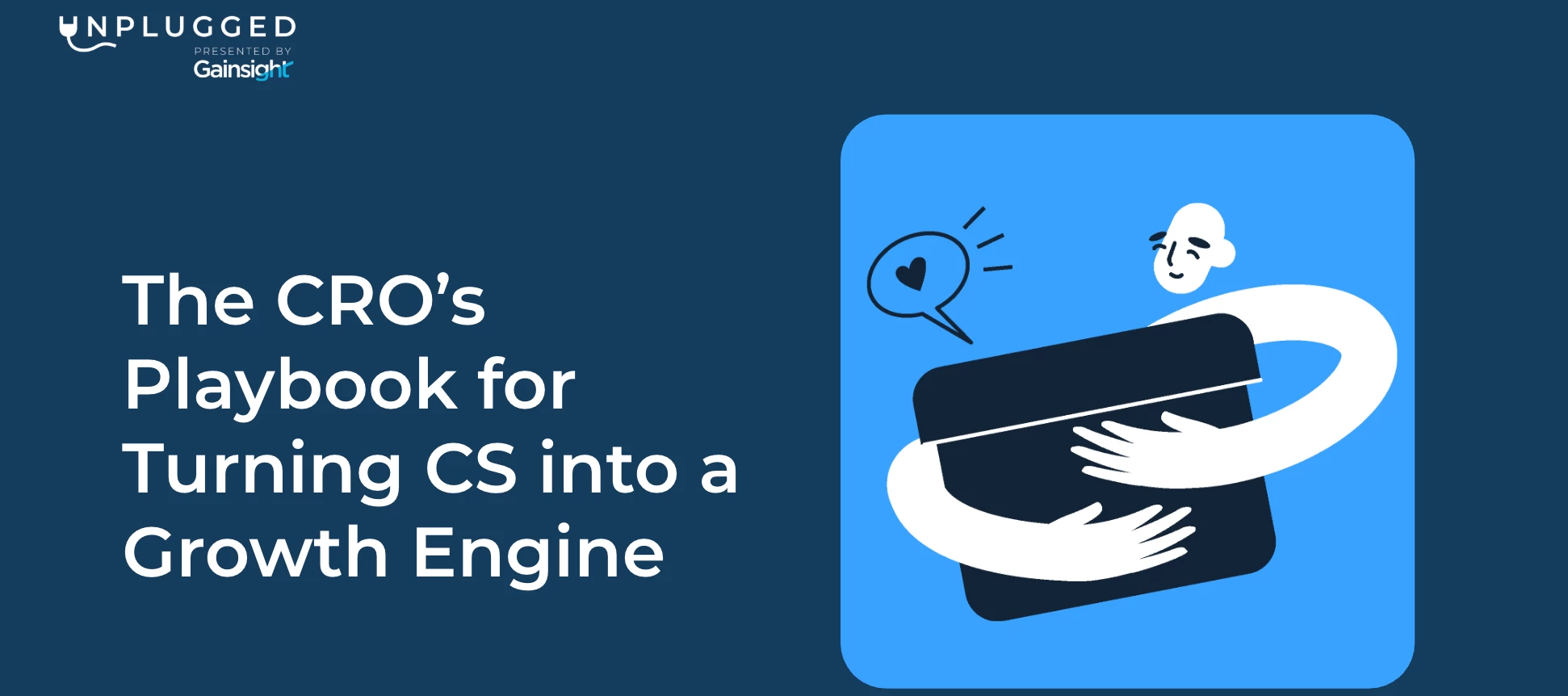Revenue Unplugged is officially wrapped, and it revealed the blueprint for scaling success after the sale.
We brought together top minds in Customer Success, Account Management, and Revenue Leadership to answer one big question: How do you turn post-sale teams into a revenue engine?
If you missed it, good news—you can watch the full recording on demand here. But for a quick hit of value, check out these highlights from Victoria Griffin, VP of Account & Customer Success Management at Acquia. She dropped some powerful insights on how her team uses digital CS to fuel retention, expansion, and scale.
Here are her responses from some of the questions asked live during the event:
What’s your overall take on digital customer success as a revenue driver?
From an account management perspective at Acquia, digital customer success is a key revenue driver because it enables us to be proactive, not reactive. Our platform provides deep insights into customer behavior and product adoption, allowing us to identify opportunities and risks early in a customer's lifecycle.
With this data, we can leverage digital customer success to align our solutions with their evolving business goals, and demonstrate ongoing value. In turn, this strengthens relationships, boosts retention, and opens the door for expansion opportunities. At Acquia, we see digital customer success as essential to delivering ROI and driving long-term growth across every account.
What leading indicators or health score metrics does your revenue team use beyond GRR/NRR?
Beyond GRR and NRR, our revenue teams at Acquia focus on a combination of leading indicators to assess customer health and forecast growth opportunities. These include product adoption metrics—such as usage frequency of key Acquia solutions and Net Promoter Scores (NPS). We also track customer engagement through touchpoint frequency (e.g., EBRs and support tickets). These signals help us identify risk early, drive more personalized success plans, and prioritize accounts for upsell or intervention.
How are you equipping CSMs to be more revenue-minded?
At Acquia, we’re fostering a mindset shift from reactive support to strategic partnership by training CSMs to identify expansion signals, lead value-based conversations, and collaborate closely with sales and account teams. This approach helps ensure they stay focused on driving customer outcomes while contributing to long-term revenue growth.
How do CS and Account Management divide responsibilities, especially when there's churn risk?
On my team at Acquia, we created a unique CS role to be able to support a higher volume of customers which we call Project Customer Success Management. Traditionally, Customer Success at Acquia involved one CSM managing a smaller number of customers for the entirety of the customers lifecycle with us. The shift to a project-based model brought structure to how long we’d engage with a customer for (which is typically about 4-6 weeks) and enabled us to support hundreds more customers than we could with our traditional model.
Project Customer Success and Account Management have distinct but closely aligned roles. Account Managers own the commercial relationship and are the day-to-day strategic advisor for the customer. Project CS is focused on driving adoption, enabling value realization, and proactively monitoring health indicators.
When there's churn risk, both functions come together quickly: AMs submit an intake request via Gainsight to loop their Project Customer Success Manager into the customer situation. The AM will provide the context—what’s working, what’s not, and where the value gaps are—while the Project CS team member will lead the risk mitigation strategy. We align internally through success plans, renewal forecasting, and escalation paths to ensure the customer sees one unified team focused on solving their problems and delivering outcomes.
How do you get the rest of the company to understand the role of a CSM, even after multiple explanations/presentations?
At Acquia, we focus on showing the value of CSMs through real collaboration and shared wins. We embed CSMs in key moments across the customer lifecycle—like onboarding, QBRs, and at-risk escalations—so teams across sales, product, and marketing see their impact firsthand. We also socialize success stories where CSMs drove measurable results, like generating Customer Success Qualified Leads (CSQLs), improved adoption or a critical renewal save. It’s about shifting perception through visibility and results.
Have thoughts on how your team is driving revenue after the sale? Drop them below, so we can keep the conversation going.

